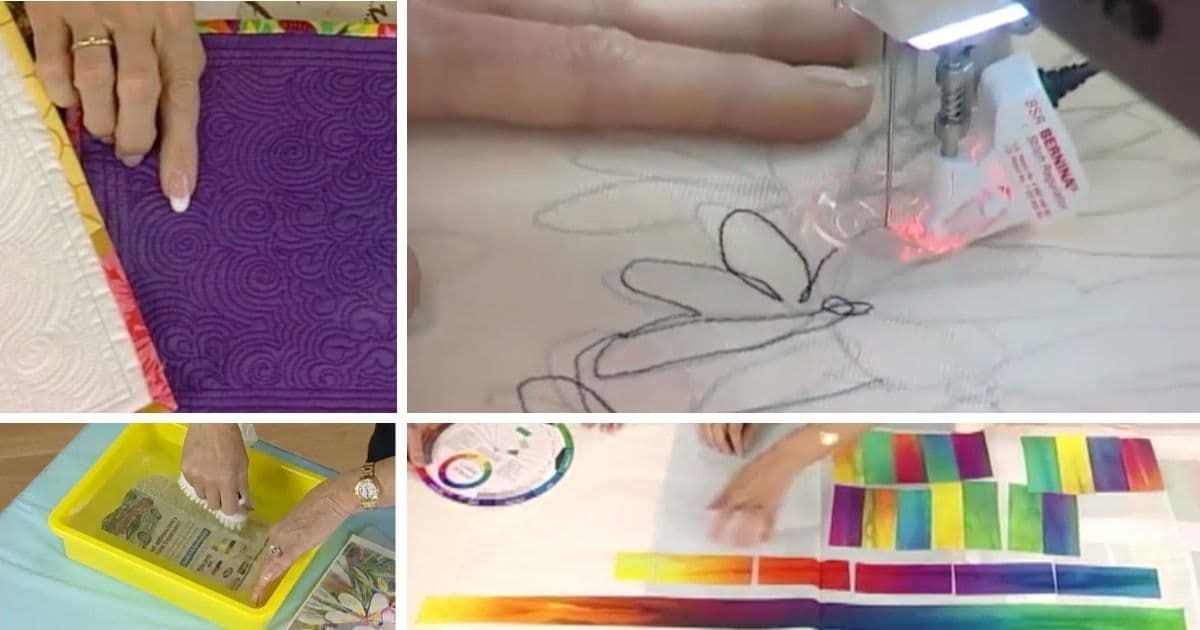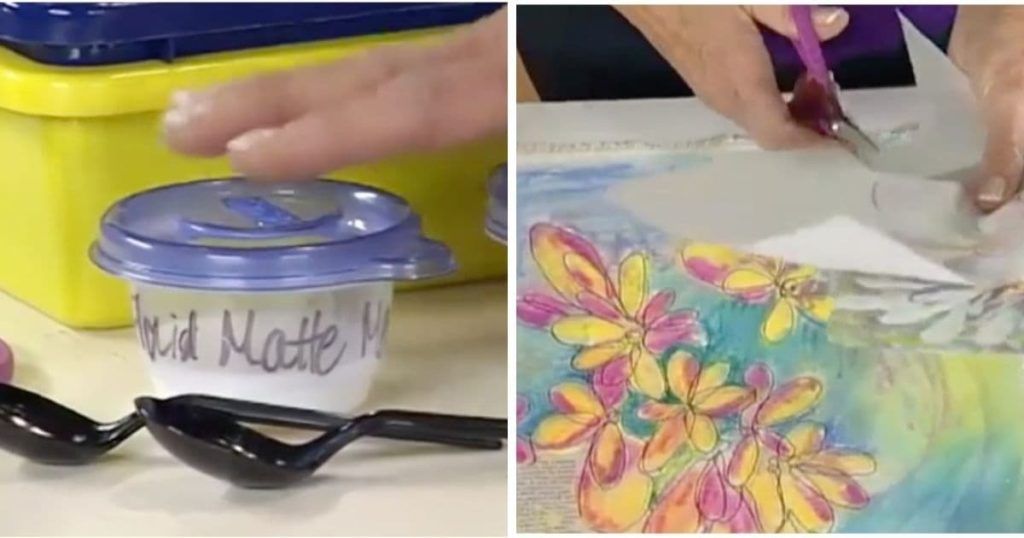Simply Art Quilting: Expanding Your World

There are worlds within art quilting, whole new realms of technique that can be endlessly explored. I’m a fan of “Quilting Arts” TV, because every episode introduces me to new artists, each with a different technique, but I recently discovered that there are a series of longer tutorials from many of these artists (all part of the Quilting Daily TV subscription). Originally only found on DVDs, these videos are a gold mine of in-depth art quilting techniques.
Since I’ve been unable to travel to events, I’ve been creating little mini-retreats at home. It’s not that same—I miss chatting with new friends and shopping the vendors—but it has been a great way to keep my brain engaged.
I’ve held the art quilting videos in reserve, because I wanted to dedicate a whole weekend to it—my very own art quilting retreat!
It’s been eye-opening.
Notions Treasure Box
When watching these videos, I’m enthralled by what the instructors use to create their art.

In her workshop, Mixed-Media Quilt Art: Creating with Paint, Stitch & Canvas, Jeannie Palmer Moore plays with fabric, of course, but also paints, water soluble crayons, transfers from newsprint and photocopies, tissue paper and carbon paper.

The tubs and brushes, crayons and water spritzers—all these strange tools help build to a lovely, quilted art piece. Watching Jeannie build the piece over the course of the video is interesting, after seeing those strange tools laid out.

“Don’t worry,” Jeannie says, as she scrubs newsprint off the fabric in a tub of water. “Organza is pretty tough.”
Some of the notions are a little more commonplace within quilting, but the mindset is different. Threads, for example, tend to play a bigger role in art quilting.

“This is the fun part,” says Faith Cleary, in her video tutorial Pet Pictures Made Easy. “Searching for the different types of thread!“
In addition to Coats & Clark, Faith recommends Gutermann threads. “Gutermann has a lot of great pet colors. I’m sure they didn’t design their thread with that in mind, but they do! They’re very natural and beautiful colors.”
Like the other instructors, Faith is able to provide immediately useful tips that come from long experience. She describes, for example, how using rayon threads to capture the reflective quality of a dog’s nose, or the sheen in your pet’s eyes.

For eyes, she also recommend a specific architectural ruler, with perfect circles, to capture the roundness of the pupils. Another tip and tool that comes from experience, giving you a quicker journey to a better result.
These certainly aren’t “standard” quilting supplies, but the moment she demonstrates using them, you understand exactly <em>why</em> they are so useful.
There is no right or wrong tool, for an art quilter, as long as it allows you to achieve the look you’re searching for.

Judy Coates Perez, a guest on multiple episodes of Quilting Arts, has an in-depth workshop on her methods called Design, Paint & Stitch Wholecloth Quilts from Start to Finish. To my surprise, she uses computer software in designing her quilt.
Maybe I shouldn’t be surprised by now, but given the organic, primitive, personal quality of her work, I admit, it was unexpected. And very interesting.
An Artist Mind-Set
There’s a specific mind-set art quilters seem to have which I admire. I want to describe is as ‘fearlessness’—and it is—but it might be better described as ‘curiosity.’

Take Ana Buzzalino (whose accent I adore). The technique she teaches was the result of a group challenge—‘Traditional Quilts with a Twist.’ She pieced a wonky Log Cabin top that was 40” x 40”, quilted it, and then dropped it in a dye bath. (Gasp!)
“And I literally fell in love with the technique” Ana says. “What followed was a lot lot of ‘What if?’ questions. What if I used this fabric instead of that one? What of I used that thread instead of that one? What would happen if I did this or that?”

You can see the answers to some of those questions as Ann flips thorugh her sample book. The freemotion-quilted squares, all dyed in spectacular hues, show how various thread fibers—cotton, rayon, polyester—react to dye.
“I call it a serendipious technique,” she says.”Because you get to do what you like, and you’re never really sure what the result will be.”
Being open to the result, willing to be surprised by the outcome, seems to define art quilting and art quilters, and I love it.
It’s just as much quilting as it is art, however. Ana’s workshop surprised me, because it was as much about quilt-as-you-go, improv piecing (including how she handles curved seams!) and freemotion quilting, as it was about dyeing.
Being exposed to these different artists—even if I didn’t necessarily think their work was ‘my style’—has been worth it. It’s been fun, adding a little playfulness to my quilting practice, and has made me re-think tools and notions. Why not use non-quilting cottons, or play with different color threads in the bobbin?
At this rate, a tub of dye may very well be in my future.







Join the Conversation!